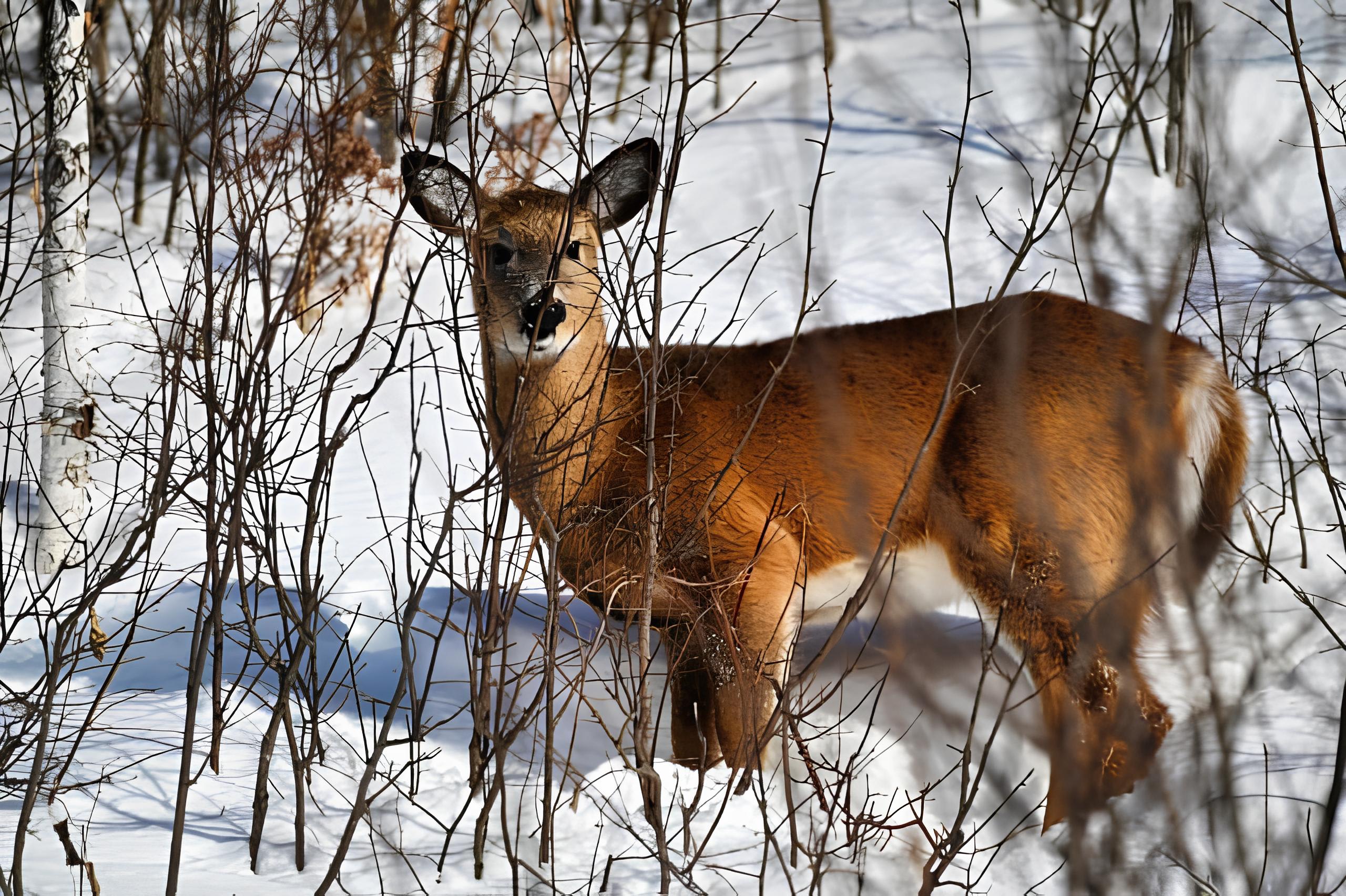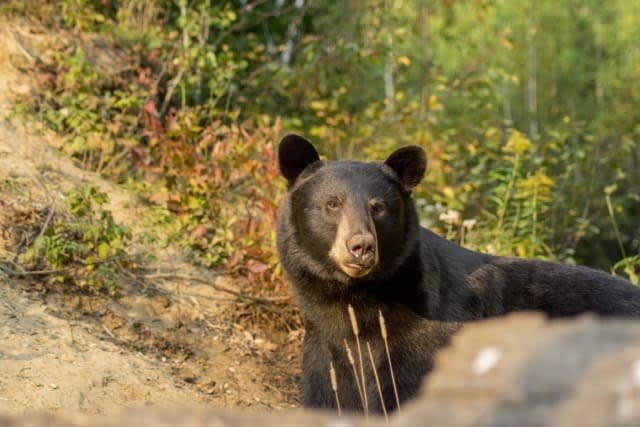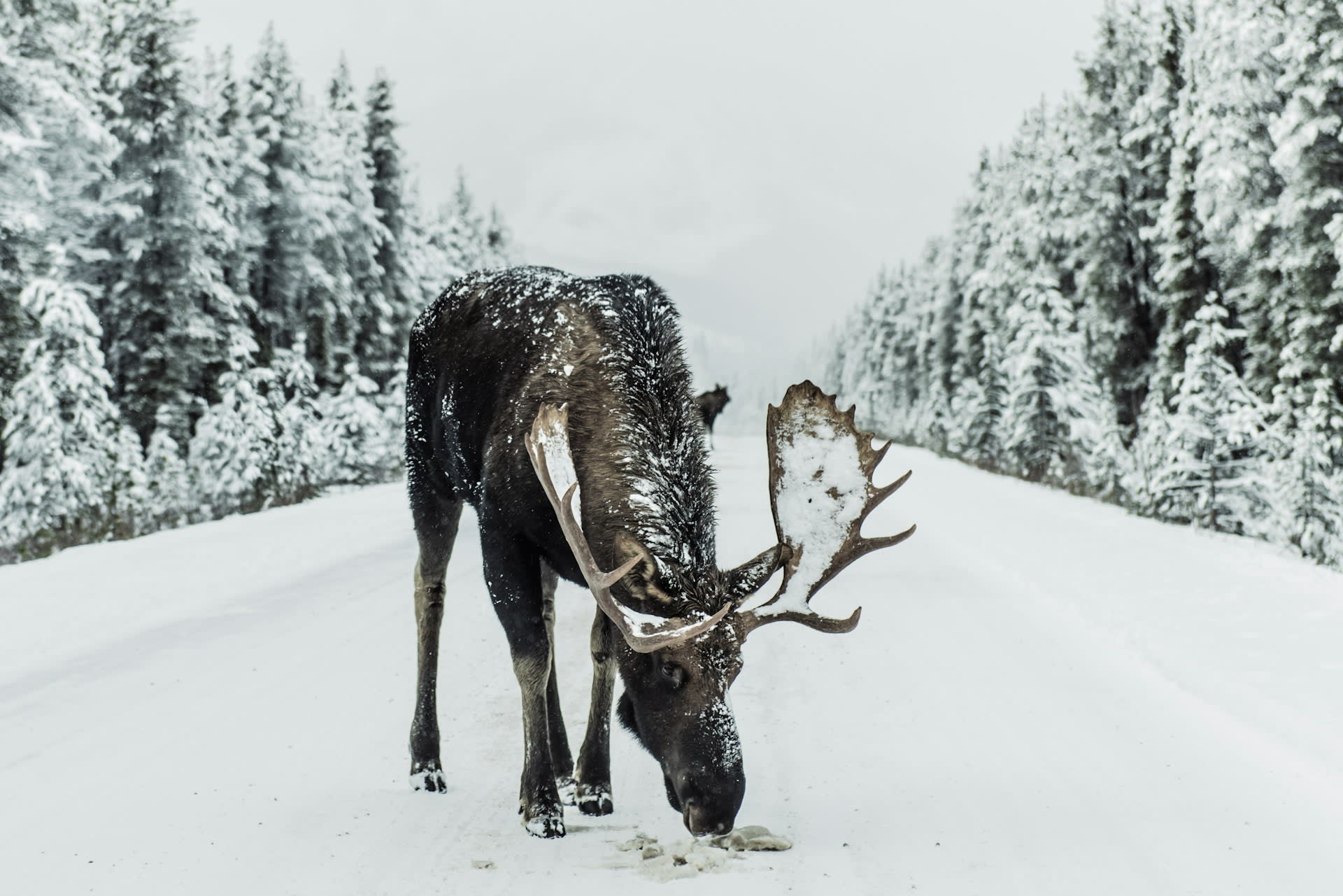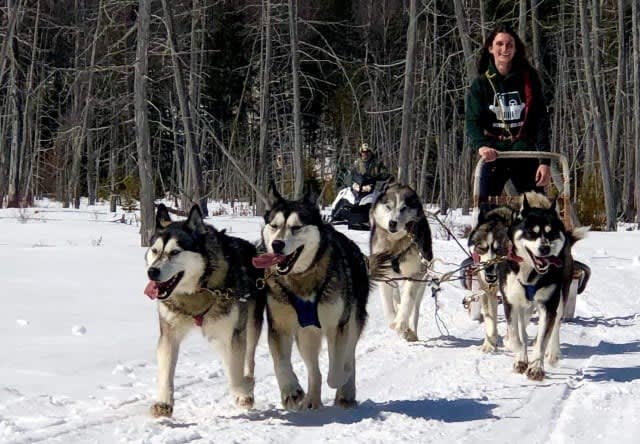Wildlife Observation in Quebec Province

Black bears, whales, moose, huskies, and birds are just a few examples of the varied wildlife you'll get to observe on a visit to Quebec Province's natural parks and bodies of water. If you love animals and are interested in seeing the fauna that Quebec Province houses and takes care of, and is available to both inhabitants and visitors, all you need to do is decide what kind of creatures interest you, and then book an excursion around their natural habitat! This great Canadian province is sure to bring out some incredible natural wonders for you.
Quebec is the biggest of the 13 Canadian provinces, and it is composed of many different types of habitats and climates. With an area of 1,542,056 km2, it is not surprising that you'll find a tundra, a boreal forest, and a taiga, not to mention a fjord and different bodies of water such as both the estuary and the gulf of a river, lakes, and more, all in one province!
With such a diverse area, the wildlife that you might be able to observe is not only varied but also pretty particular to Quebec Province. Imagine observing moose, deer, black bears, whales, and over 150 different species of birds! Learn more about the kinds of wildlife available in Quebec Province in this article.
Black Bears

Black bears are the smallest of the North American bears, with an average height of 66 to 91 cm, an average length of 137 to 188 cm, and an average weight of 40 to 160 kg, depending on sex and age. They can be found almost all around Quebec Province - save for Prince Edward Island-, usually around deciduous or mixed forests, and sometimes in the Tundra. The size of their population in a specific place will depend on the amount of nourishment available, which means that they will also be found near sources of water such as streams, rivers, and lakes. Finally, black bears can be recognized, as their name indicates, by their completely dark fur, sometimes accented with a white spot on their foreheads.
Now, from May to October, you'll be able to follow an experienced guide as you delve into the forest and set up on an observation deck to prepare to see the smallest of the North American bears. On a black bear-watching excursion around Quebec City, you'll be able to see these incredible animals in their own habitat, while both you and them are protected from harm by being a safe distance away from each other.
If you are interested in the subject, you can read more about where to find black bears in Quebec Province!
Whales

Whale-watching in Quebec Province is one of the best wildlife-based activities available there! There are about 12 species of whales that migrate to the St. Lawrence every year. Among them are:
- The Harbour porpoise, the smallest of the cetaceans around the St. Lawrence and one of the smallest in the world with a size of 1.5 to 2- meters, and a weight of 45 to 50 kg.
- The Atlantic white-sided dolphin, creatures that travel in groups and interact with passing boats. They tend to be between 2 to 2.7 meters in length and 180 to 230 kg in weight.
- The White-beaked dolphin, which is found in the northern side of Quebec Province, is between 2.5 to 3 meters long and 135 to 275 kg.
- The Beluga whale is the only species that lives in the St. Lawrence year-round and is identifiable for its white skin. The Beluga whale is an endangered species, and it stands between 3 to 4.5 meters long, and 0.7 to 1.5 tonnes.
- The Long-finned pilot whale, which tends to form family units of dozens of its kind and is regularly found in the Gulf of the St. Lawrence. They tend to measure between 4 to 5 meters and weigh between 2 to 3.5 tonnes.
- The Mink whale, the smallest of the baleen whales, measures 6 to 9 meters and weighs 6 to 8 tonnes.
- The Humpback whale, one of the most well-known cetaceans in the world, you'll get to see their tails when they dive. They tend to be 11 to 13 meters long and 25 to 30 tonnes!
- The Fin whale, which is possible to spot during the summer in the St. Lawrence Estuary. It tends to have a length of 18 to 21 meters and a weight of 40 to 50 tonnes.
- The Blue whale, which is the largest animal on the planet, ranging between 21 and 26 meters and 80 to 210 tonnes! Only a few hundred of them still exist, and the St. Lawrence Estuary is one of the few places left to see them near the shore.
For example, the Beluga, Fin, Minke, Blue, and Humpback whales are the ones you'll most likely see on this whale-watching excursion in Tadoussac. You can enjoy a boat ride from June to September, and search for these incredible mammals, a once-in-a-lifetime opportunity!
Moose

Take the opportunity to see the biggest horned animal in the world! The moose is one of the most interesting animals you will find around Quebec Province and there are several places where you can observe them.
These interesting and signature Canadian animals are mostly found in the Jacques-Cartier River valley. With an average height of 2.40 to 3 meters and a weight between 227 and 635, depending on sex and age, they are an incredible species, able to withstand cold weather, so they are to be found in the more northern parts of Quebec Province.
Moose might be confused for the woodland caribou, which is also large in size and horned, and found around Quebec Province. However, these are two different species, both worthy of visitors' attention!
Huskies

Dogs might not be a species particular to Quebec Province or "wild" in description, however, there are not many places where you'll see so many huskies in one place! When you take a dog sledding ride along Saint-Hippolyte, for example, you'll not only get to experience the incredible thrill of riding a sled pulled by strong, adorable dogs, but you'll also get to spend some time in their kennel, and then enjoy a Quebecois meal on-site.
See the Siberian, Alaskan Malamute, and Alaskan huskies as you take on an adventure in the more remote parts of Quebec Province! Find out about the best spots to go dog sledding in Canada, here.
Birds

For ornithology enthusiasts, Quebec Province - and its many natural parks - can be a paradise of more than 400 known bird species!
Some of the most known species are found in places like the Laurentides, Montreal, Quebec City, the Marais du Nord, and the Saguenay-Lac St-Jean area.
Some of the species you might find most commonly, if you take, for example, a guided hike in the Jacques-Cartier National Park, are chickadees, pileated woodpeckers, and blue jays year-round; horned or snowy owls in the winter, and the ruby-throated hummingbird, great blue heron, and American robin in the summer.
But generally, you could be lucky enough to see golden eagles, Harlequin ducks, different kinds of sparrows and hawks, parakeets, mute swans, wild turkeys, ruffed grouses, and many more! All you need to do is prepare for the current weather and venture into the available natural parks around where you're staying in Quebec Province.
More species
But Quebec Province, with all its natural parks, animal reserves, and overall natural habitats, holds many different species that you can observe by venturing into these natural havens.
You can observe beavers, foxes, deer, weasels, wolverines, caribous, bats, mountain lions, coyotes, squirrels, hares, wolfs, bobcats, shrews, and even Polar bears!
It all depends on the time of year and the places you visit when going to Quebec Province.
So, if you're a wildlife enthusiast, and are looking for a great place to spot a full and incredible northern fauna, Canada, but especially Quebec Province, is the ideal place for you! All you need to do is decide which season is the best for you to visit, and then head to Quebec City, Montreal, the Laurentides, Charlevoix, or Hippolyte, among other wonderful Quebequoise destinations, and stride into its many natural parks, or hop on a boat, and you'll get to observe some of nature's wonders with experts that will help you discern between species and take you to the right places to observe your chosen animal!
Learn how to get to and how to move around Quebec Province, as well as what other amazing activities are available to you in this wonderful place!